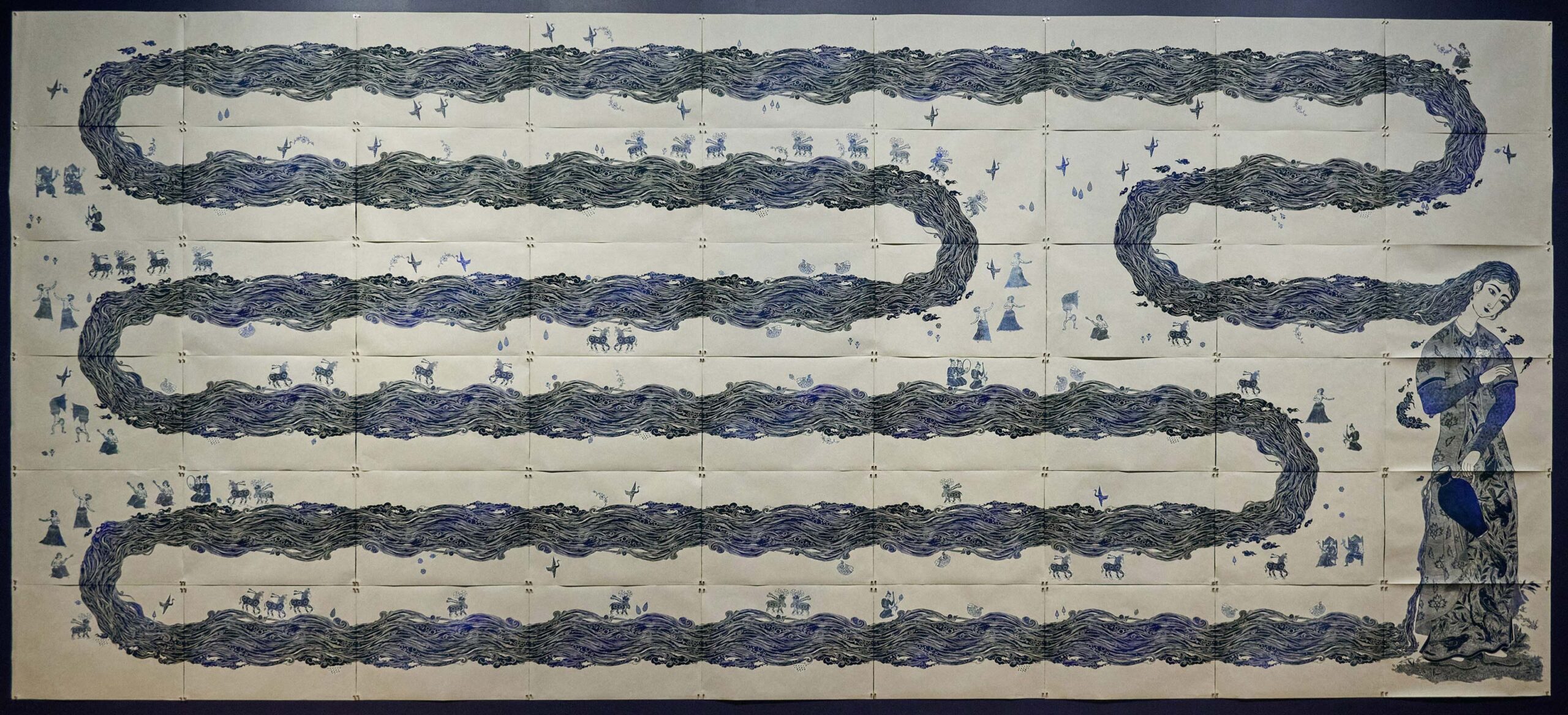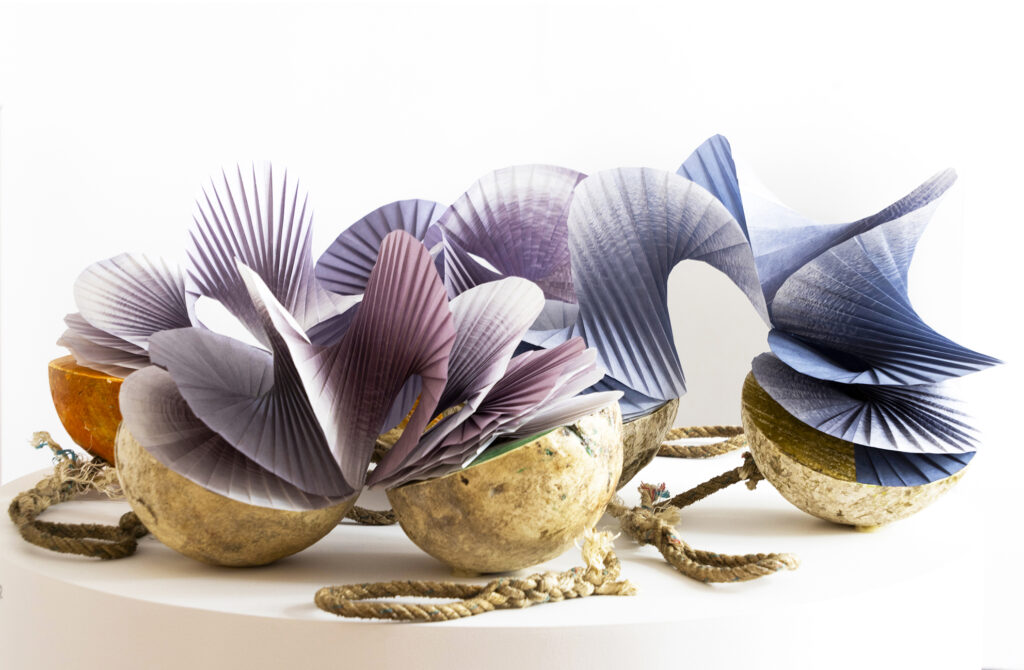Above:
Niloufar Lovegrove, Equable Goddess, 2022, lino print on Awagami Kitakata paper, 309 x 697.5 cm, unique edition.
Below:
Niloufar Lovegrove, Blooming Abundance, 2022, lino print on Lokta paper, 51 x 76 cm, edition of 40.
Niloufar Lovegrove, The Last Waterhole, 2022, lino print on Lokta paper, 51 x 76 cm, edition of 35.
Niloufar Lovegrove, Angels of the Extreme, 2022, lino print on Lokta paper, 51 x 76 cm, edition of 25.
Niloufar Lovegrove, Offerings, 2022, lino print on Lokta paper, 51 x 76 cm, edition of 30.
Niloufar Lovegrove, King’s Last prayer, 2022, lino print on Lokta paper, 51 x 76 cm, edition of 40.
Niloufar Lovegrove, Goddess with Red Rage, 2022, lino print on Lokta paper, 25 x 25 cm, edition of 60.
Niloufar Lovegrove, Too Little,Too Much exhibition view.
All images © and courtesy of the artist
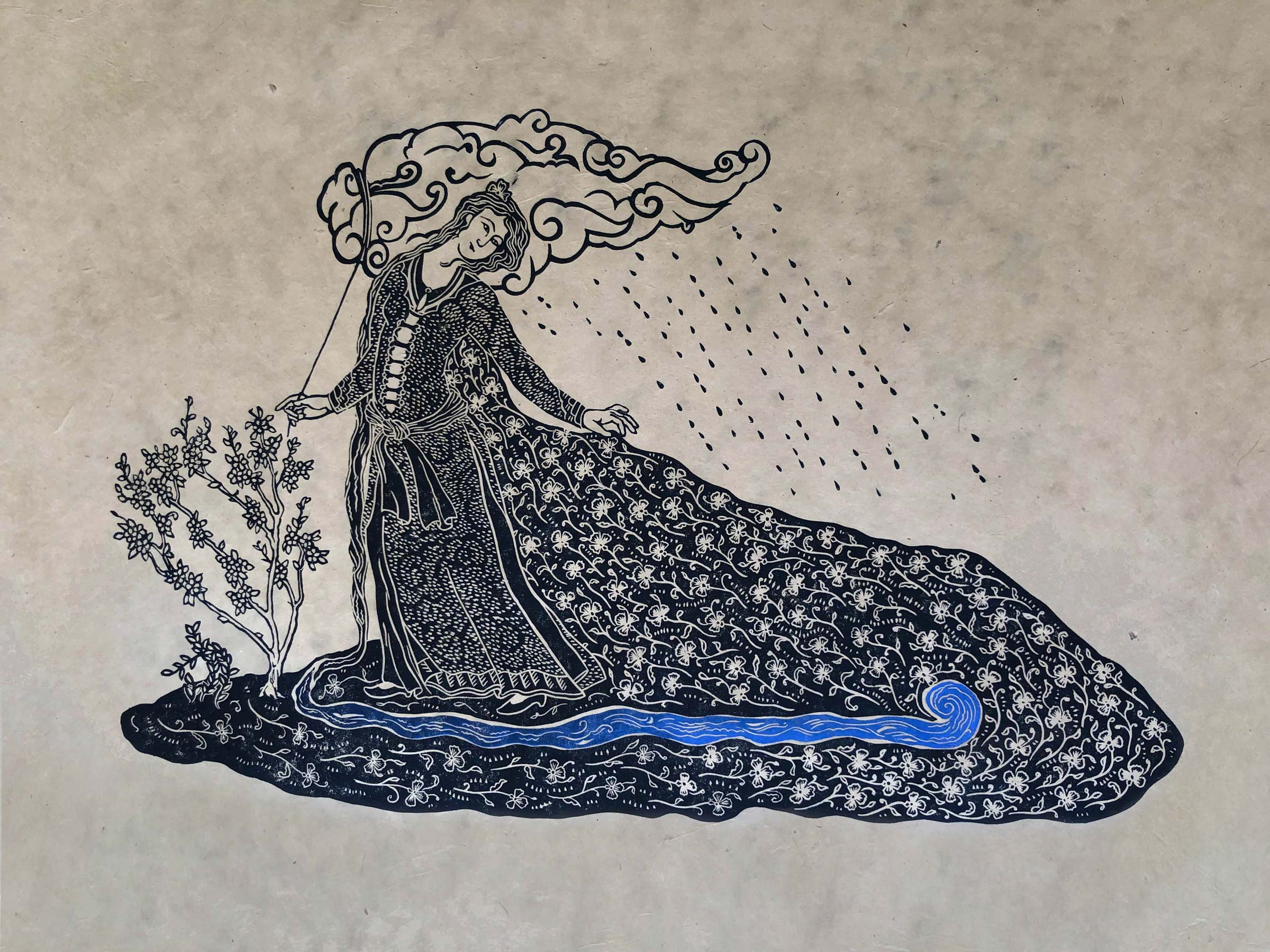
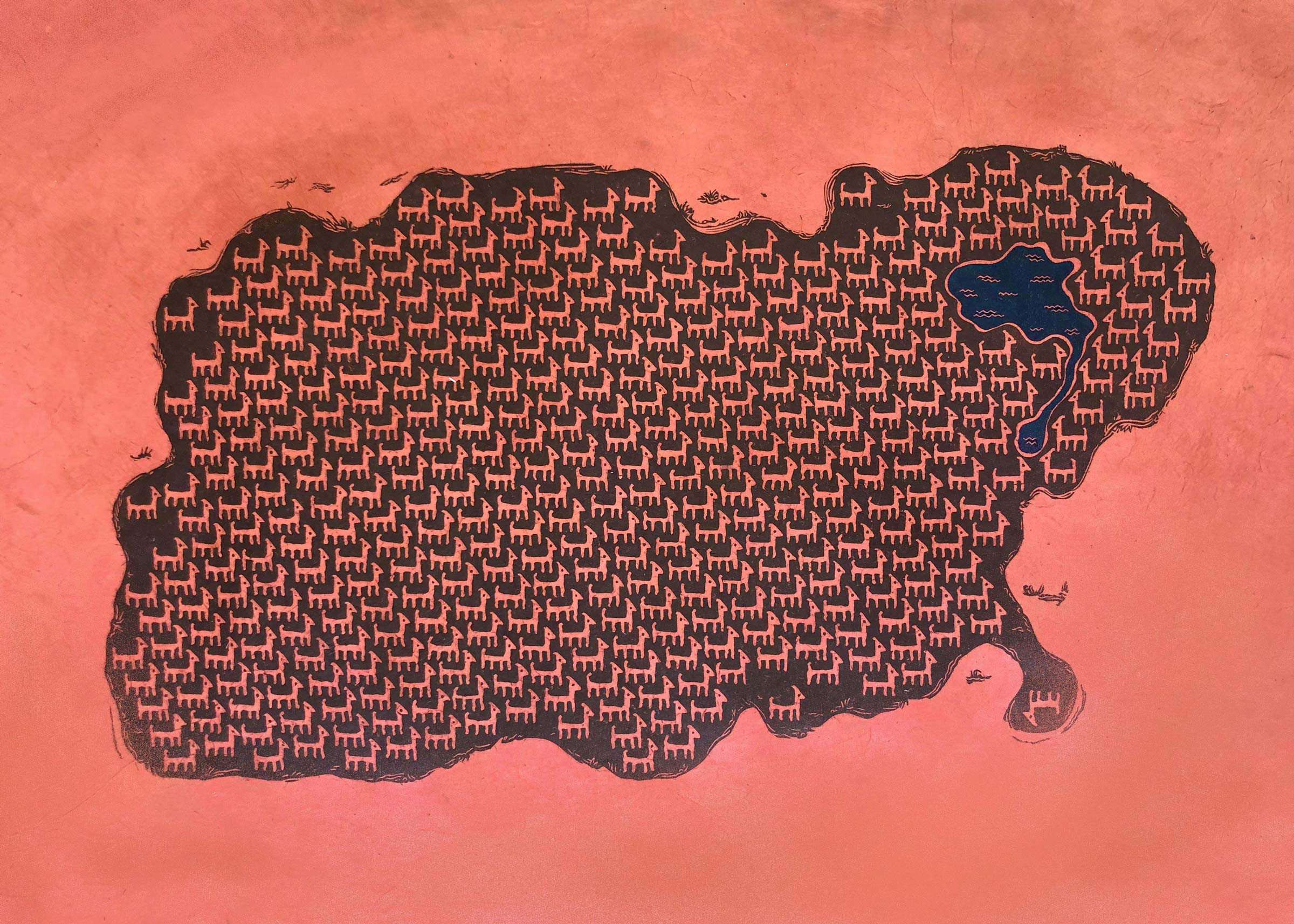
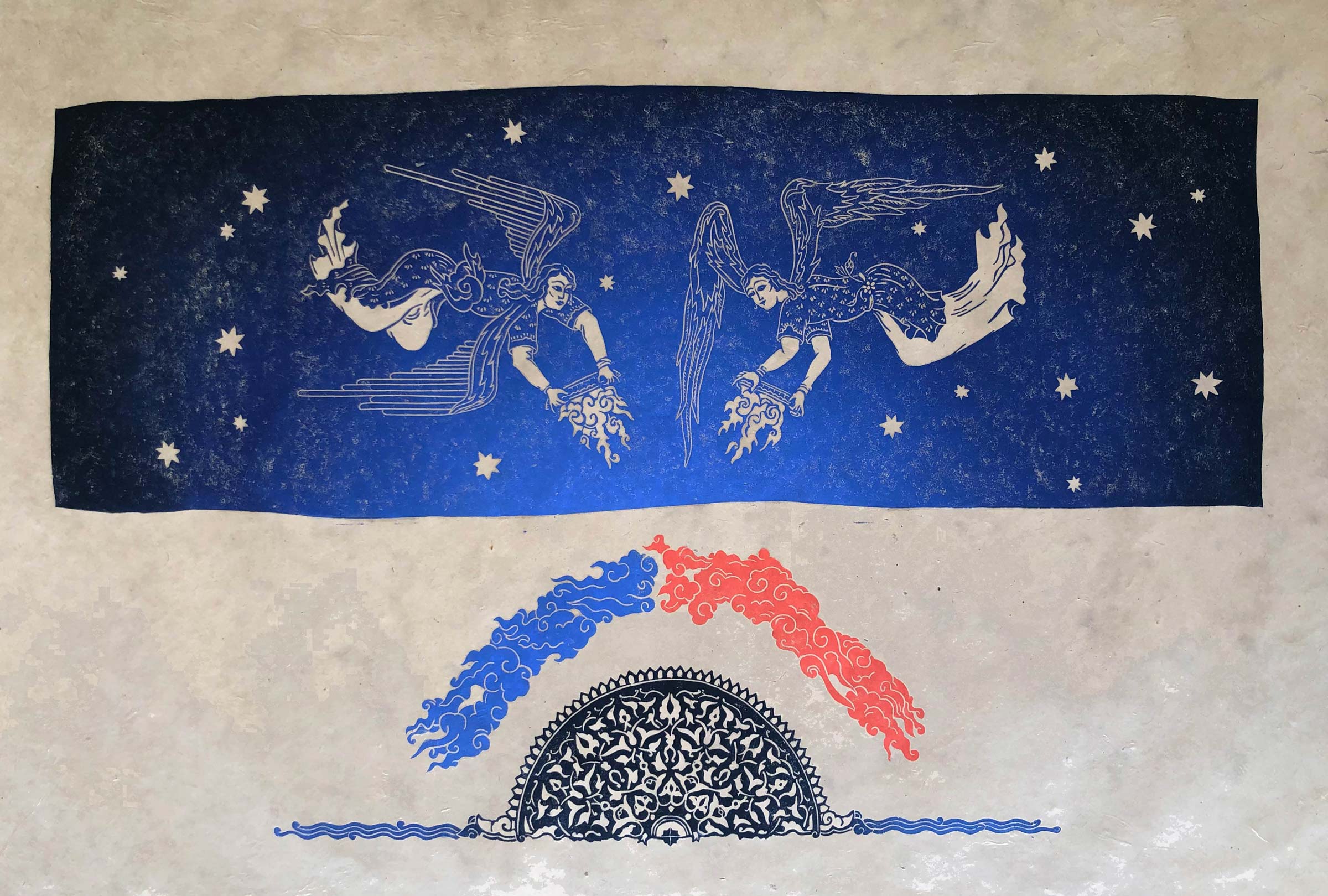
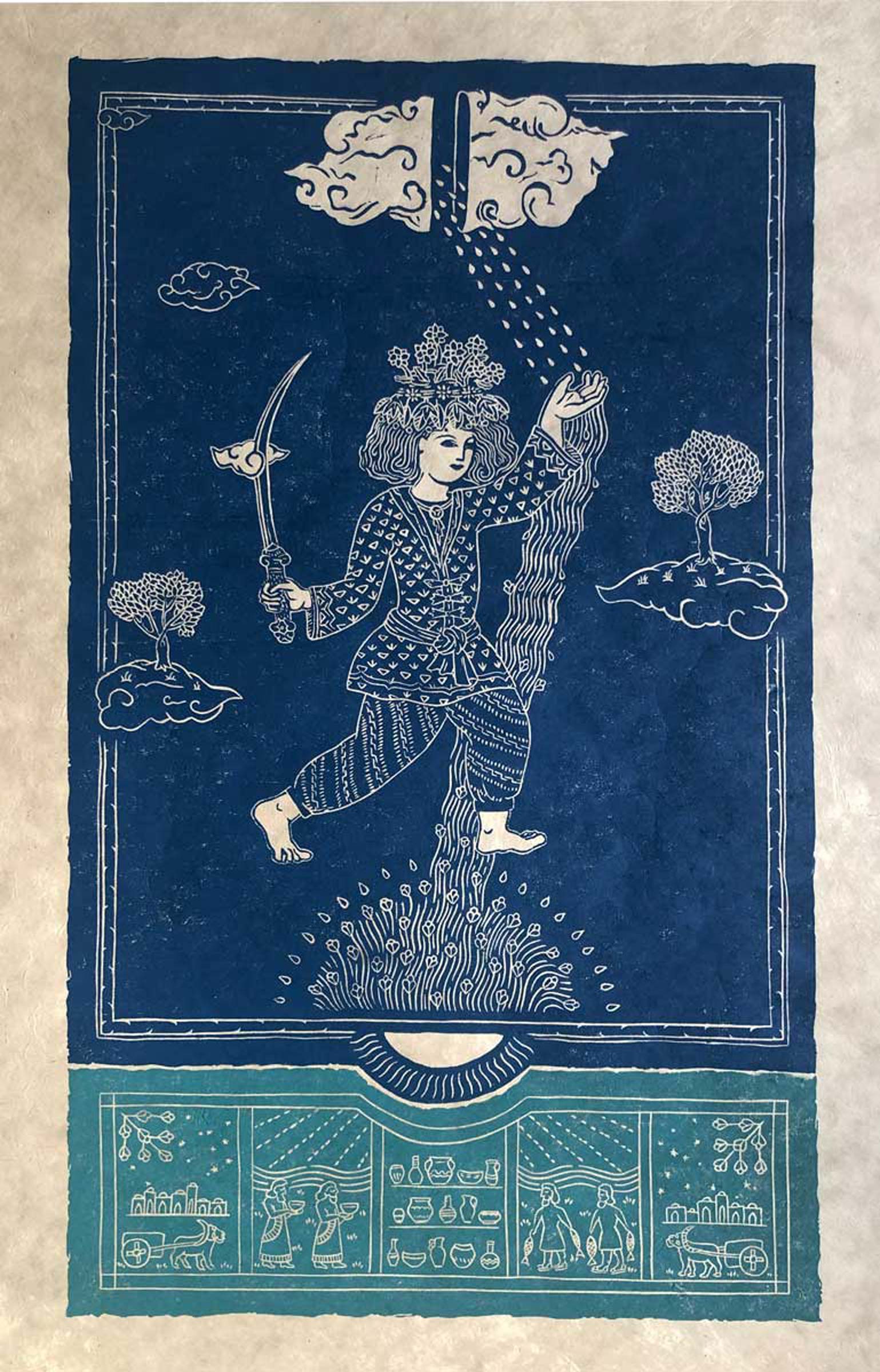
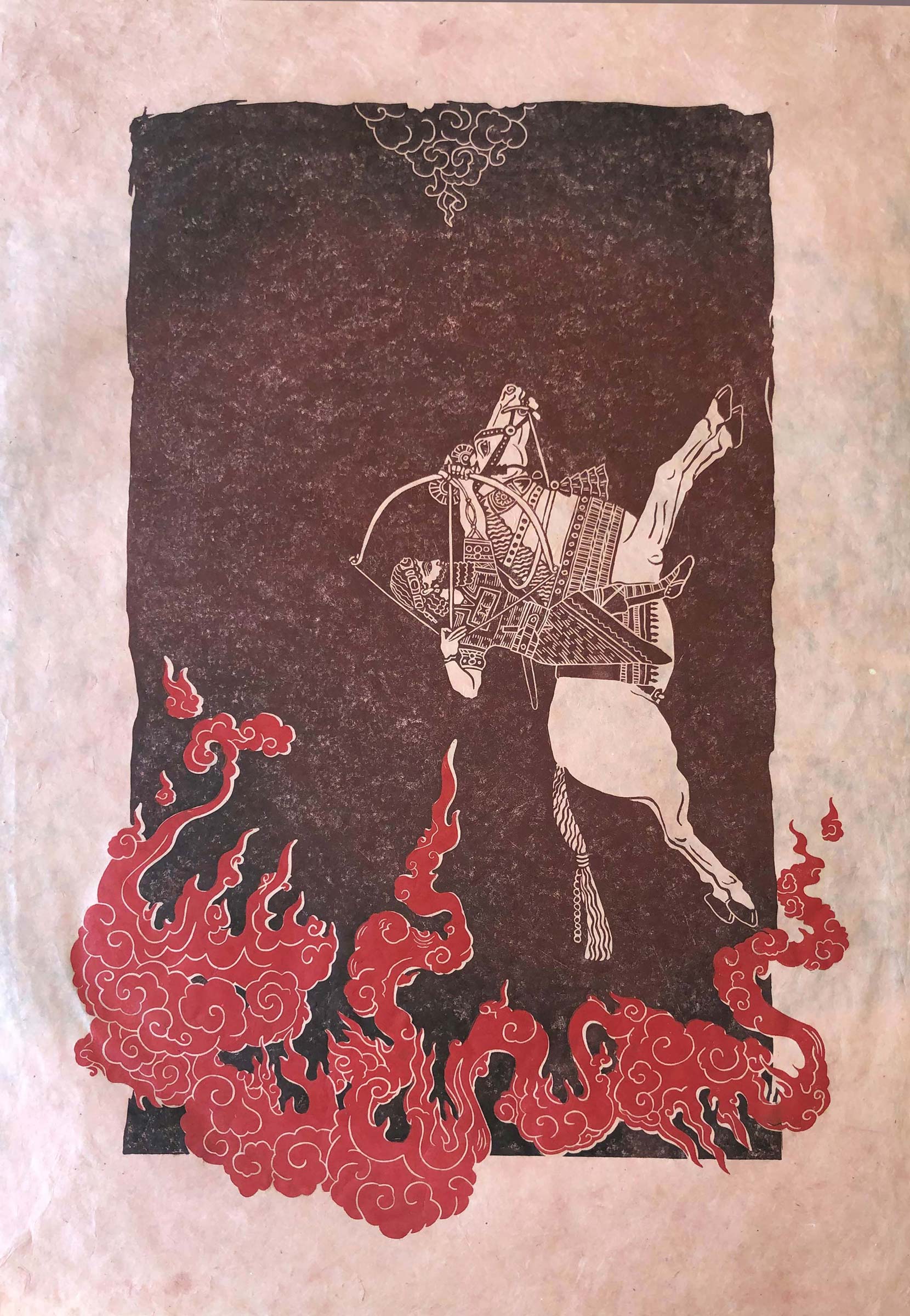
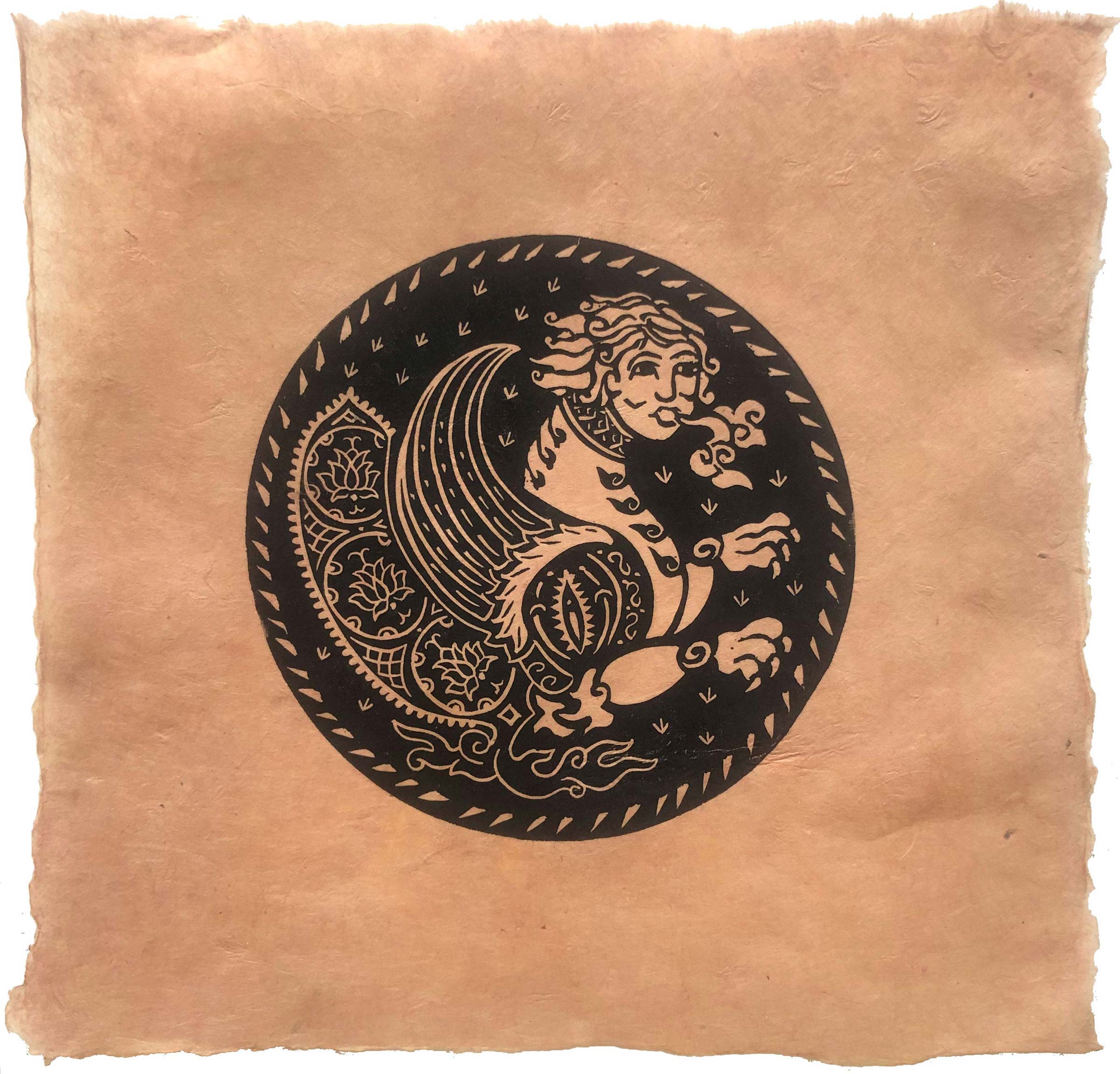
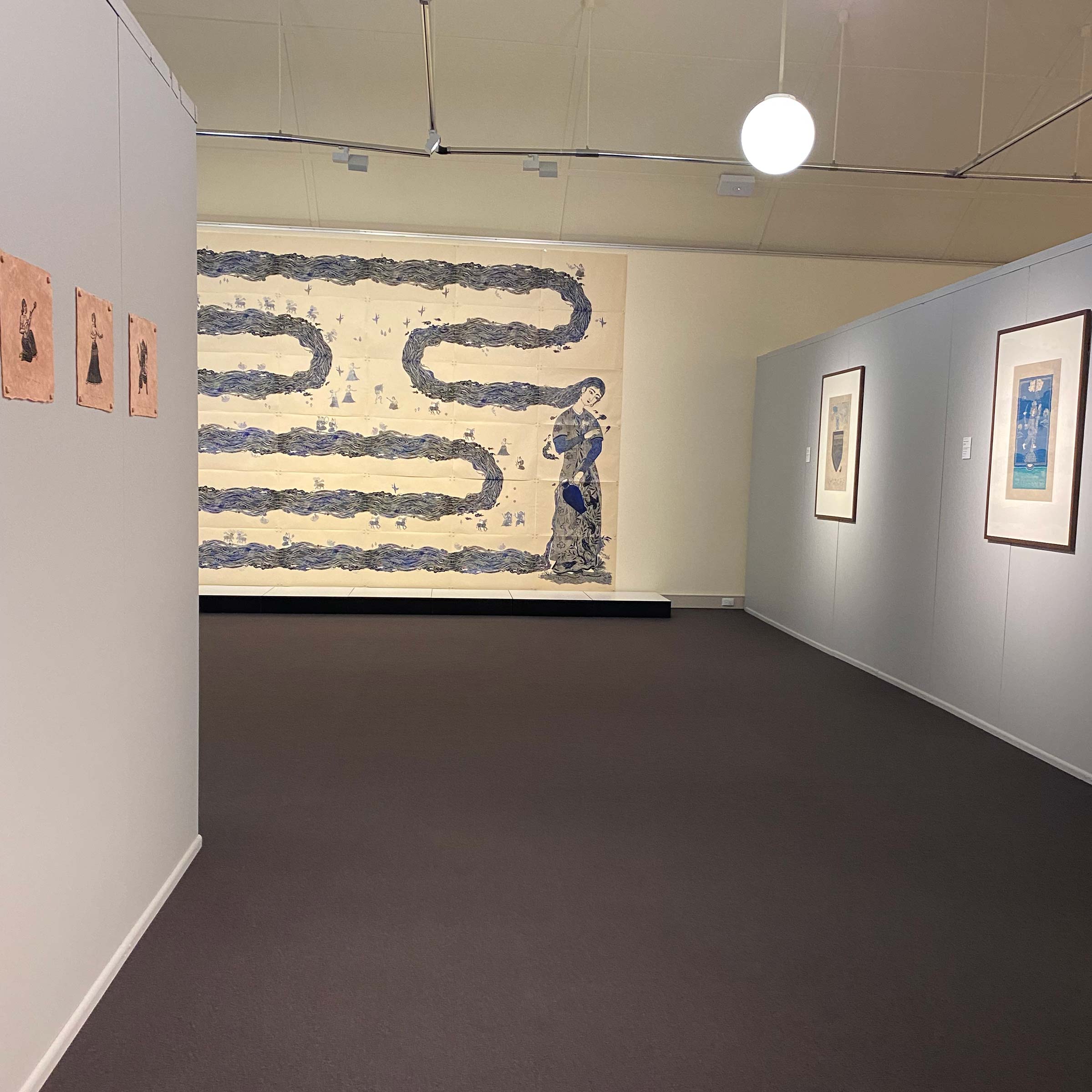
Q: What were some of the foundation ideas for this exhibition project?
A: In recent years, we have been experiencing the consequences of both insufficient and excessive rainfall and I wanted to join this very crucial conversation. Too Little, Too Much reflects on the theme of water in all its forms and our universal need for it to sustain quality of life. The main ideas were formed during the horrific widespread bushfires across Australia, followed by warnings of extreme floods. For me, it’s a means to empathize with those who experienced these events firsthand and to inspire creative solutions through a new narrative rooted in my visual language derived from Persian heritage. The artworks draw inspiration from the mythologies of ancient civilizations, where natural disasters were symbolized the gods’ rage, punishment for people’s sins, but also often for their own reluctance and bad temper.
Incorporating these ancient elements and myths from diverse cultures indirectly addresses the subject of climate change, aligning with my intention to emphasize the timeless and borderless nature of our relationship with the environment. It also serves as a reminder that our actions, or lack of it, will be written in future history books, a thought that fills me with both optimism and dread.
Q: How did the artwork selection take place?
A: This body of work was originally created specifically for my solo exhibition at Artspace Mackay, Foundation Gallery. The concept and initial sketches were developed for the proposal, with further discussions with the curator, Lauren Turton, during the creation process. These conversations focused on details such as concept, sizing, and display, considering the unique characteristics of the Foundation Gallery, which features deep, dark blue walls that stretch high to the ceiling, creating an immersive experience. The choice of paper and colours were heavily influenced by this space.
The works are currently on display at Gladstone Regional Art Gallery and Museum, curated by Claire Robinson alongside the ‘Asia Pacific Contemporary’ exhibition, which has been a fortunate experience. With the artwork selection predetermined, our attention shifted to curating them within a larger gallery space. We’ve incorporated interactive elements for visitors, including a children’s activity area where they can craft dresses for the gods of good weather, participate in scavenger hunts, and engage with stamping stations—a particular favourite of my son!
Q: How does the exhibition manifest – what do visitors experience?
A: The exhibition seems to first capture the attention of visitors with its Persian motifs, and as they reach the large-scale installation, they pause to engage and connect their own stories and inspirations while following the very long hair. The compositions in the works, both the smaller pieces and the large installation, are bold yet detailed, inviting viewers to get closer, as an opportunity to discover more. I have enjoyed hearing how visitors’ perception changes as they identify new details on closer observation.
From various photos and interactions, I must say my favourite is from a group of preschool kids visiting the gallery and joyfully imitating the dancing girls’ figure, a heart-warming testament that there is no visual barrier between cultures and ages.
Q: What are some of the key works and what subject matter do they deal with?
A: Each of the works has a unique narrative that can be explored more deeply, either by delving further into the story or simply by changing compositions and colours to evoke various emotions while emphasizing its message. For example, The Last Waterhole can easily serve as a foundation for a body of work on roaming goats, due to its fluid form.
That said, the primary storyline and essence of the exhibition should be the 54-panel installation depicting an ‘equable goddess’ who loves the land she walks upon, extending all her caring intentions to look after it and all its inhabitants. The installation consists of a plate representing her figure, with additional plates depicting her river-like hair flowing throughout the land. Connected to the river is water pouring from the jug she holds, creating a never-ending cyclic motion between her intention and her action. Her land is home to rams, horses, birds, and fish and of course people who are celebrating their jubilant life.
This oversized work, all printed by hand, is both my defiance against the ancient reluctant gods and my joining with those who care to change the pages of future history.
Q: What is it about the printmaking experience that you most appreciate?
A: My first experience with printmaking goes back 30 years ago during my Bachelor of Communication Art at Tehran University. Since my degree was in graphic design, my efforts never exceeded the minimum course requirement, yet it reminds me of good uni years. Then, after moving to Australia and becoming a stay-at-home mom in a new town, I reached out to the art community and serendipitously found myself at Capricornia Printmakers in Rockhampton. I started with lino printing and became hooked, both on the technique and the new people I met.
It may sound like an exaggeration, but printmaking seems to hold the very essence of life! There’s a beautiful blend of traditional and contemporary techniques involved. Each stage of the process demands meticulous attention and intuition, from thoughtful design choices to precise carving and sharpening of chisels, to protecting the plate from any imperfections, whether it’s dust or stray eyelashes, until the final image is revealed. It is the process that requires you to be mindful and aware. So, when I am satisfied with the final print, it feels as though life itself is balanced and in order.
I also find it versatile because it allows you to repeat, create patterns and bring it to life in more ways than just framing it.
—
Too Little, Too Much, by Niloufar Lovegrove is at Gladstone Regional Art Gallery and Museum, cnr of Goondoon & Bramston St, Gladstone , until 6 April.
gragm.qld.gov.au
—
Join the PCA and become a member. You’ll get the fine-art quarterly print magazine Imprint, free promotion of your exhibitions, discounts on art materials and a range of other exclusive benefits.

